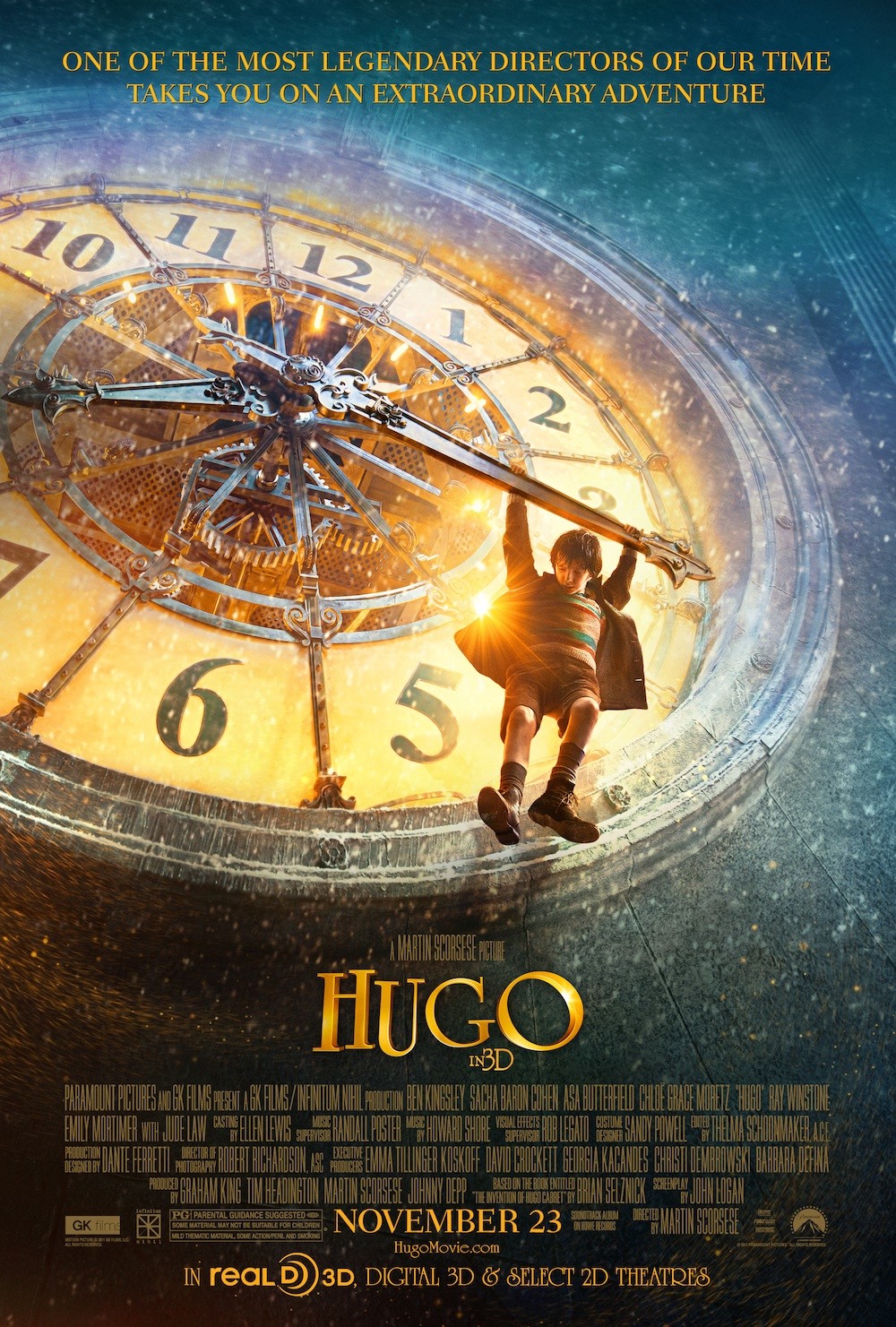Martin Scorsese’s first experiment with family filmmaking is combined with his first attempt at 3D, and the results are (because there is no better word) magical. Based on the highly-recommended novel “The Invention of Hugo Cabret” by Brian Selznick, Hugo is the story of an orphan living in the walls of a Paris train station in the 1930s. Hugo Cabret winds the clocks, steals food, dodges the troublesome station inspector (Sacha Baron Cohen), and works in secret to repair a mysterious automaton.
In his exploration of the automaton’s origins, Hugo discovers that the old man in the train station toy shop is actually Georges Méliès (Ben Kingsley), the filmmaker behind the famous image of the rocket hitting the man in the moon. But now he is forgotten by the filmgoing public. Bitter and angry at the world, Méliès catches Hugo attempting to steal parts for his automaton, and Méliès puts the boy to work in the toy shop to pay back what he owes.
Considering the films Martin Scorsese is famous for it may seem odd to say this is the perfect combination of artist and material, but there really is no other major filmmaker who could have given Selznick’s book the appropriate respect. The novel uses a combination of text with full-page pencil sketches to tell the story like an early film. This is captured beautifully by Scorsese in many sequences where dialogue is not required and therefore is not used. It is easy to imagine some directors being less comfortable with visual storytelling, and as a result they would have made a film that failed to capture the magic of silent films.
A love of movies is present throughout. Hugo takes his friend Isabelle (Chloë Grace Moretz) to see Safety Last!, Harold Lloyd’s 1923 comedy. The classic clock tower stunt brings gasps to the film audience (and brought a few to the theatre I was sitting in as well). Moments like these are peppered throughout and build to the celebratory climax.
Scorsese’s first attempt at 3D is anything but amateur. The depth of the images is used to beautiful effect. An opening crane shot through the crowds of the train station and up to Hugo’s face is a perfect rendering of the same sequence from the novel. Other scenes, such as a chase up the clock tower or a train crash, make further use of the power of 3D to enhance the experience.
A good critic should remain outside the review and judge on the merits of the production, but I have to step in at this point to say that the use of 3D conversion on some of the silent scenes shown from Méliès’ films made me giddy. I’ve been a fan of silent films since I first saw Charlie Chaplin’s The Gold Rush when I was a kid, and ever since the 3D trend started I’ve wanted to see exactly what Martin Scorsese showed me in this film. By converting the images to 3D he brought back the magic that so many people overlook when they see a silent film.
Of course the key to any good movie - silent and monochrome or talkie and colourful 3D - are the actors. Supporting parts played by Ray Winstone, Richard Griffiths, Frances de la Tour, Jude Law, Emily Mortimer, and the great Christopher Lee are all perfectly fitted into the story without taking anything away from the lead performances. Ben Kingsley gives another high-class performance, and Chloë Grace Moretz proves again that she will not disappear like some child actors have. But the true gem in this film is Asa Butterfield as Hugo. Butterfield has appeared in a few supporting roles, and would be most recognized as Bruno in The Boy in the Striped Pajamas, but in Hugo he is infinitely watchable as the frightened yet unyielding hero. Like many others I have been skeptical about the upcoming film of Orson Scott Card’s “Ender’s Game,” but now that Butterfield has been announced as the lead my hopes are significantly improved.
The Verdict: A beautiful, immersive, magical, and powerful film about the power, magic, and immersive beauty of silent cinema. A perfect coming-of-age adventure.




No comments:
Post a Comment